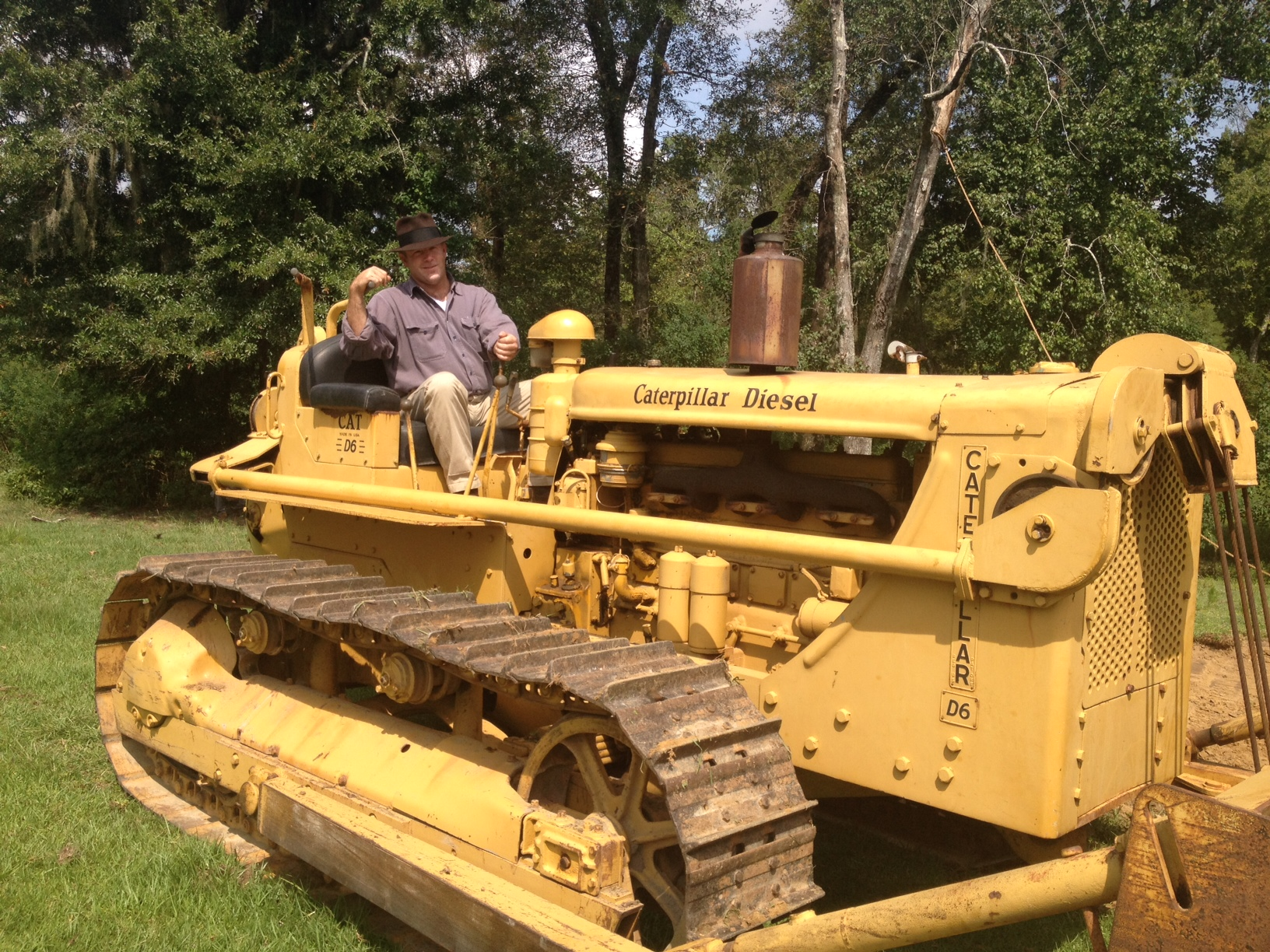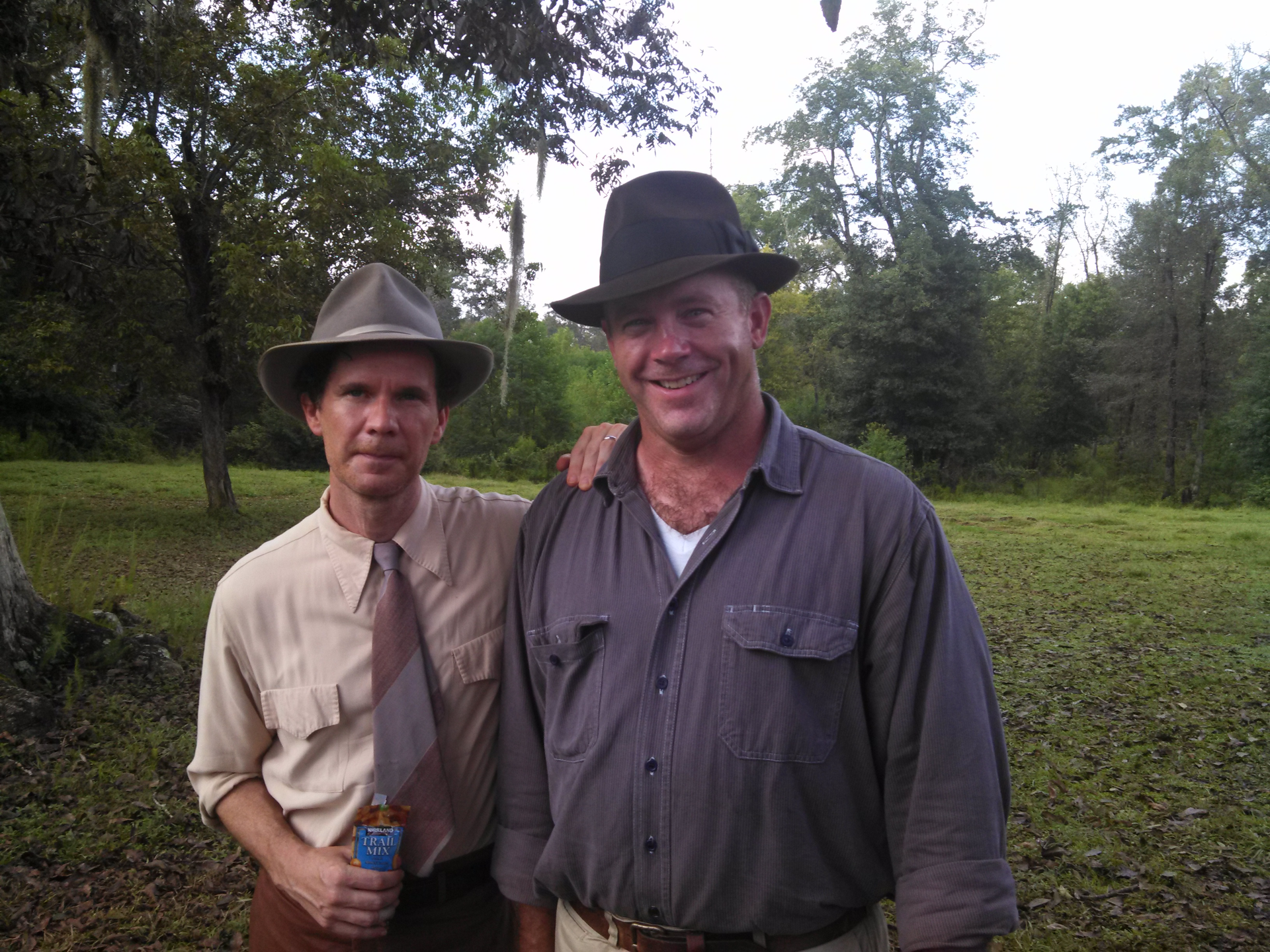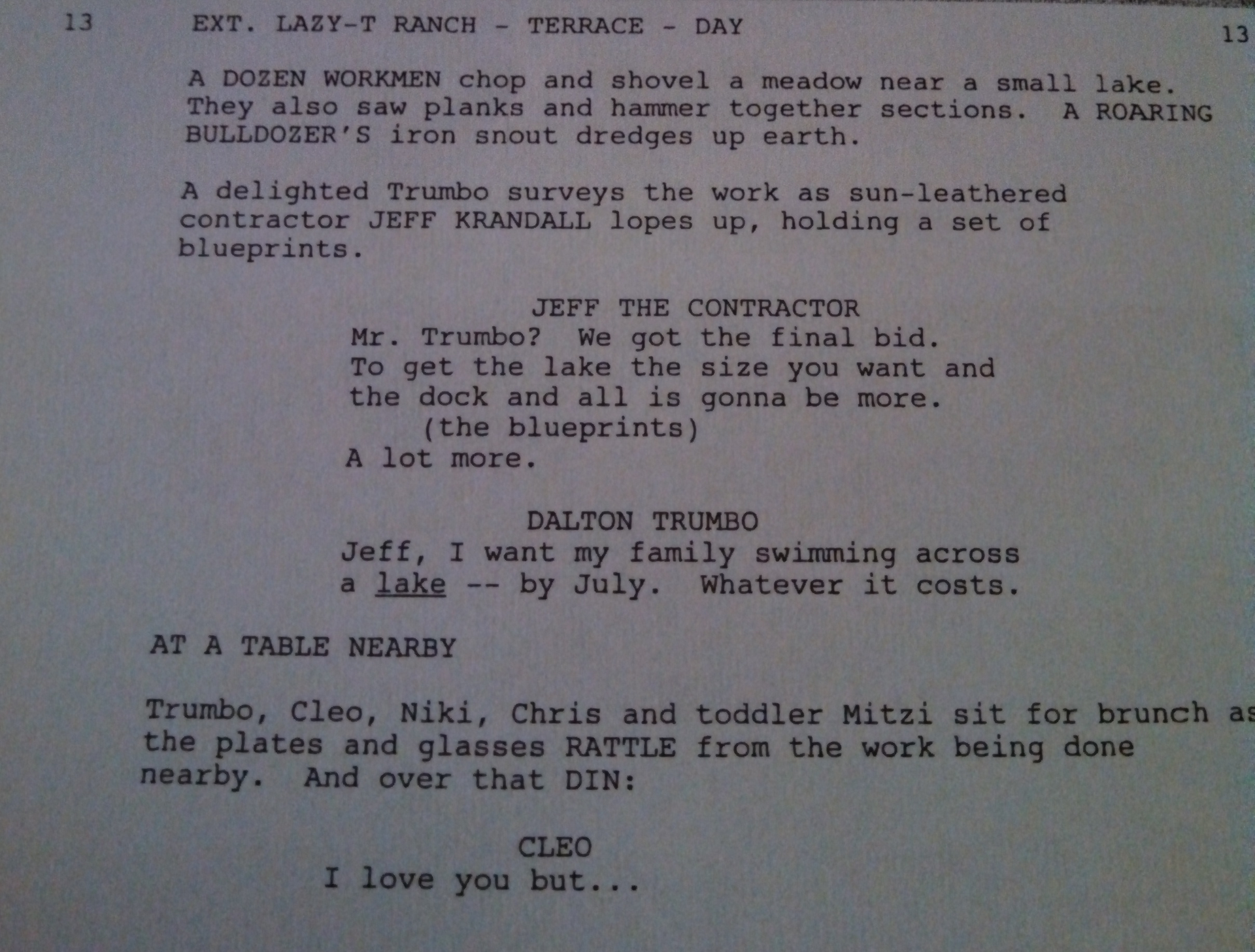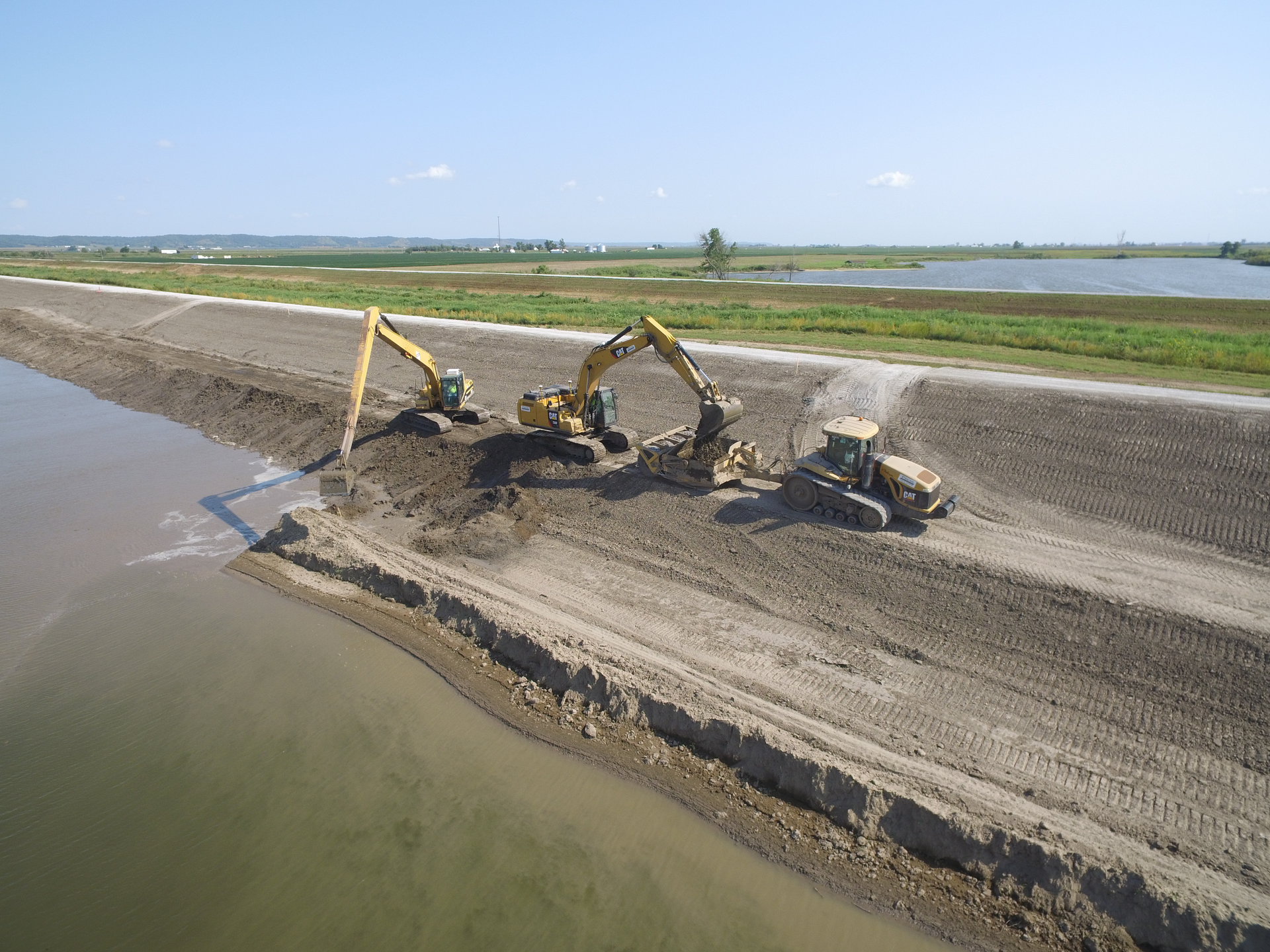Home » Construction Services (Page 5)
Category Archives: Construction Services
Spot the Robot Dog Fetches Your Data and Brings Back As-Builts

You might just see this unusual looking dog roaming around construction sites soon. But don’t call the pound just yet. The robotic dog known as Spot is armed with Trimble’s X7 3D laser scanner and Trimble FieldLink software to collect data while navigating challenging, dynamic and potentially unsafe environments.
The full integration of Trimble’s scanner and software with Spot (built by Boston Dynamics) means users don’t have to figure out how to sync all the technology. It comes as a turnkey unit ready to go.
“Using the X7 integrated with Spot lets us document changes on the jobsite and make important decisions in the field, rather than waiting hours or potentially days for the information to be relayed to our project staff,” says Thai Nguyen, director of virtual design and construction at Hensel Phelps. “This allows us to make the best decisions as quickly as possible with the best information.”
The integrated unit allows you to create a predefined path of waypoints for Spot to follow as it collects laser scans like a well-trained pup. The data-collection runs can be scheduled on a regular basis with Spot autonomously covering exactly the same ground for design validation and progress reporting, creating real-time, as-built data analysis in the office and field.
Laser scans can be matched to a jobsite project coordinate system as well as individual scan stations. Once the data are collected, they’re turned into a composite point cloud in real-time on the Trimble tablet controller before leaving the site. Spot’s docking station enables in-field battery charging on both the robot and the X7 3D laser scanner and provides the continuous transfer of data through a Gigabit Ethernet connection to the office.
The complete solution includes the Trimble X7 3D laser scanner, Trimble FieldLink software, a ruggedized tablet controller, and Boston Dynamics’ Spot Enterprise robot with enhanced autonomy features, plus an integrated self-charging docking station for Spot and the laser scanner. The package is available through Trimble and select BuildingPoint distribution partners.
What makes Spot unique among robots is his ability to “see” and walk over obstacles, climb stairs, dodge people and equipment and navigate rough terrain. That can be your usual jumbled up jobsite, but you can also send Spot and its Trimble scanner off to collect data in confined spaces or places that are hazardous for people.
If Spot looks familiar it’s because we’ve reported on his progress before, including the time when the clever canine was spotted roaming around the Trimble booth at ConExpo 2020. Check out some of our previous coverage in the links below:
Spot the robot ‘dog’ could one day scan jobsites, do layouts and maintain machines if Trimble, Hilti, Boston Dynamics collaboration succeedsHow Spot the Robot Dog Got a Job in Construction | The Dirt #17
Did you miss our previous article…
https://constructionosa.org/?p=681
Almost Famous: This “Like New” 1956 Cat D6 Dozer Gets a Shot at the Movies
Erik Christenbury often gets calls from people wanting to display antique Caterpillar construction equipment. But one that stands out in his mind came about seven years ago from a coordinator on a major motion picture.
The coordinator was calling from Wilmington, North Carolina, on behalf of the director, and he needed a 1950s era dozer.
As founder and president of Chapter 12 of the Antique Caterpillar Machinery Owners Club, Christenbury was happy to assist. Assuming the movie was being shot in his home state, he sent a photo of his 1956 Cat D6 9U dozer. He had bought the machine about a year earlier – a rare find as it had less than 900 operating hours on it and all original parts.
It was about as brand new as a 1956 dozer could be. He said the director was welcome to use it.
He soon learned the movie was being shot in New Orleans – more than 800 miles away from his home in Liberty, North Carolina. Christenbury looked around for antique dozers closer to the movie location, but the director had his heart set on his D6. He wanted it in New Orleans by 5 a.m. on a Monday.
Along with the long distance, the dozer’s blade made it a wide load, so it couldn’t be hauled on a Sunday when wide loads are prohibited, unless the blade was removed. Christenbury let the coordinator know it wasn’t going to be cheap. He immediately got the OK after sending in his quote.
He and his friend removed the blade, loaded up the dozer and hit the road to New Orleans.
“We pulled up on the movie set about 9 o’clock Sunday night, and they had a security guard there,” Christenbury recalls.
It was just a little house by the side of the road. It didn’t look like a movie set.
“I was like, ‘Is this the right location for the movie?’”
The guard said it was.
“Where can we unload?”
Grandfather’s 1940 D2
Christenbury began his antique Caterpillar equipment collection in the 1990s, starting with the D2 tractor his grandfather bought new in 1940. A dealer had talked his grandfather into trading in his gasoline-powered Cat Fifteen for the new diesel-powered tractor, which was quickly becoming popular with farmers. He paid $1,800 for it.
His grandfather used the D2 as a drawbar tractor on his cotton farm for terracing, plowing, and dragging logs out of the woods.
“He always said that was his favorite tractor,” Christenbury recalls.
Christenbury bought the worn old tractor from his grandfather. He cleaned it, got it running and slowly restored it over a period of years. He calls it the pride and joy of his collection, and it was just the beginning.
“That was what started our Caterpillar collecting,” he says. “And unfortunately, Caterpillar made a lot of different models. So as a collector, you decide, ‘Hey, I’d like to have one of each model.’ And then it just grows from there.”

Erik Christenbury, right, restored this Caterpillar D2 dozer that Erik’s grandfather bought new for $1,800 in 1940. Christenbury owns ChrisCo Machinery in Liberty, North Carolina, where he buys, sells, rebuilds and manufactures industrial woodworking machinery.Erik Christenbury
Finding a “like new” 1956 D6
Today Christenbury has about 150 pieces of antique Cat equipment he has acquired from all over the country. One of those is the 1956 D6 9U he lucked upon one day.
While driving down a highway, he saw it covered with a blue tarp in a front yard.
“I turned around and knocked on the front door,” he recalls. “An older man came to the door and gladly talked about his tractor.”
Charles Moretz had operated the D6 since his employer bought it in 1956. When his boss no longer needed it on the farm and decided to sell it, Moretz bought it and had kept it all those years. It had less than 900 hours on it, and all parts were original. Christenbury let him know that if he ever decided to sell, he’d be interested.
“Halfway home my phone rang,” he says. “It was the owner of the D6 I just looked at, offering it to me for purchase.
“Needless to say, we struck a deal on the phone, and I picked it up the very next day.”

Charles Moretz was the original operator of the 1956 Cat D6 dozer. Erik Christenbury purchased the dozer from him. It had less than 900 hours and all original parts.Erik Christenbury
He needs a hat
Christenbury and his friend were soon met by the director after they arrived at the movie’s staging area at 5 a.m.
Christenbury didn’t know the name of the movie, what it was about or how they intended to use the D6. He was surprised when the director asked him if he could operate it for them. He said he’d be glad to teach someone, that it wouldn’t take long to learn.
“We’d rather have you do it,” the director said.
Christenbury agreed and soon his hair was getting cut, his goatee shaved, makeup applied and his 1950s-style wardrobe donned. But there was one thing missing.
“Every good dozer operator wore a hat to keep the sun out of his eyes,” Christenbury told them. “You’ve got to give me a hat.”
So they did.
“They gave me this hat that looked like Indiana Jones.”

Erik Christenbury with his 1956 Cat D6 on the movie set, dressed in 1950s wardrobe – and Indiana Jones-style hat.Erik Christenbury
Dozer operator/movie actor
After a long wait, Christenbury was told where to put the dozer and where the cameras would go. He still didn’t know the movie’s name or story line.
“I was like, ‘Well, what are we going to do with it? Are we burying dead people? Are we building something? Making a road?’”
The director said, “We’re making a pond.”
“I can make you a pond,” Christenbury replied.
And so for about 5 minutes, he moved dirt while they filmed. Later, they had him lean up against a pickup truck and pretend to talk to one of the characters while the main actors were behind him.
He was about to leave early the next morning when the coordinator who had hired him said they needed him for one more day. The director wanted another shot with the dozer.
“So I’m pushing dirt again, and they’re throwing dust in the air,” he says. “And they’re zooming up on the tracks as it’s moving and dirt spilling over the blade and that kind of stuff.”
The script described it: “A ROARING BULLDOZER’s iron snout dredges up earth.”
It lasted about 5 or 10 minutes, and the scene was done. Christenbury and his friend could head back home to North Carolina.
“Children of the Corn” reunion
While on the set, Christenbury eventually learned that the name of the movie was “Trumbo,” starring Bryan Cranston, Diane Lane and John Goodman.
“We saw Diane Lane and Bryan Cranston,” Christenbury says. “John Goodman wasn’t there yet, but I saw a lot of actors.”
The movie is based on the life of Dalton Trumbo, a screenwriter who was blacklisted during the McCarthy era. Christenbury’s scene was to show that Trumbo had come into some money and wanted to build a lake by his home.
Christenbury, of course, was the dozer operator. His friend was the surveyor.
Playing the general contractor in the scene was Sean Bridgers, an actor Christenbury had met before.
At age 16, Christenbury had played a role in the horror flick “Children of the Corn Part II – The Final Sacrifice,” which was shot near his home in North Carolina.
Bridgers was also in the movie, which came out in 1992.
Christenbury, who was big for his age, was a stunt assistant and also played one of the children of the corn. “I was one of the terrors that went around killing people,” he says. One of his “victims” was a doctor he “stabbed.”
So when he saw Bridgers on the “Trumbo” set, he ran after him.
“Hey, buddy, were you in ‘Children of the Corn Part II?’” he asked.
Bridgers said he was, turned back around and kept walking.
Later, Christenbury got a second chance to get reacquainted. He was on the set later in the day when Bridgers walked around the corner.
“You don’t remember me,” Christenbury said, “but I was in the ‘Corn’ movie with you way back when.”
Bridgers started to remember.
“We talked and he was real nice guy,” Christenbury says.
“It’s funny,” Christenbury recalls telling Bridgers. “The only two movies I’ve ever been in in my whole life, you were in both of them.”

Actor Sean Bridgers poses with Erik Christenbury on the “Trumbo” movie set. Bridgers played the general contractor for the pond’s construction, while Christenbury operated his 1956 Cat D6 dozer.Erik Christenbury
Watching “Trumbo”
When “Trumbo” came out in 2015 several months after Christenbury had hauled the D6 to New Orleans, he took his father and his friend to see the movie at the local theater.
In the opening scene, Trumbo is looking out over a lake.
In the theater, Christenbury punched his buddy in the arm.
“We didn’t make the cutting room floor,” he tells his friend. “They cut us out.”
“What do you mean?” his friend says.
“There’s that lake we were supposed to have built.”
Christenbury laughs while recounting the moment.
“So sure enough, they cut that out of the movie,” he says.
Despite all the work and being cut from the film, Christenbury enjoyed the experience. It was fun seeing the movie stars. It also helped that he was paid well.
He adds that he was in good company, noting that Bridgers met the same fate.
“His part got cut out of the movie, too,” Christenbury says. “So I didn’t feel too bad.”
As for the D6, it’s fame for now is relegated to antique equipment events.
“We proudly take it to shows and demonstrate the machine, giving lots of new operators a chance at the controls,” he says.
“It’s not everyday you get to operate a ‘like new’ 1956 machine.”

A glimpse of the movie script for “Trumbo” for the lake-building scene that Erik Christenbury operated his 1956 Cat D6 in.Erik Christenbury
Did you miss our previous article…
https://constructionosa.org/?p=674
Check Out These 4 Rugged Construction Phones, Including the New Cat S22 Flip
The ruggedized phone has seen a resurgence of product releases this year, and this time a seemingly retro product – yesterday’s flip phone – is getting a new look. We’ll first look at the newest offering in this category and then review the other ruggedized phones that have made headlines this year.
Cat…with a flip

Cat S22 Flip phoneBullitt GroupThe siren call of smart phones has frustrated many construction supervisors observing crew members on their phones instead of working. One possible answer: ban smart phones and require a flip phone.
There are a couple of options out there, including the just-released $234 Cat S22 Flip, an Android 11 Go phone that runs on T- Mobil’s 4G LTE network.
“It really simplifies what a phone should be,” says Adrianne O’Hare, senior manager, brand marketing for Bullitt Group, the Cat phone licensee. “It has all the same rugged features and credentials that you would expect from any Cat phone.”
The S22 is simplicity and functionality wrapped up in an exterior designed to take on construction. Drop proof, dust proof and waterproof, the S22 offers voice and text, fast internet browsing and access to essential apps. Users have access to email, camera, social media, maps, search, talk-to-text and Google Assistant.
“There are a lot more businesses that are looking to go into a low-cost device that’s easy to use and offers fewer distractions,” O’Hare says. “Android Go is like a hybrid version between what’s available on a traditional flip phone and a smart phone.”
The essentials of the familiar flip design are still there: no calls when closed, so no need to worry about accidental dials. When closed, the front window gives you at-a-glance date, time and battery life. The S22 also has a large glove-friendly keypad, a dedicated programmable side button for push-to-talk capabilities and amped up volume that gives you the ability to hear in noisy environments. The 2,000-mAh removable battery lasts and “an entire day and beyond,” Bullitt says.
The phone meets toughness standards, including IP68 ingress protection and MIL SPEC 810H certification. Waterproof to 5 feet for 35 minutes, it has also survived repeated drop testing from 6 feet onto steel on every side and corner, and the hinge has been tested 150,000 times, Bullitt says. The 2.8-inch internal touch screen is protected by Corning Gorilla Glass 5 and optimized for use with wet-finger or glove-on working technology.
“The large keys were important since those in the field are always wearing gloves,” O’Hare says. “You don’t have to worry about taking off your gloves or if you’re in a wet environment.” The S22 can also be used in potentially hazardous work environments and is certified to be non-incendive, Class 1, Division 2, Group A-D, 4T.
Although the Cat S22 is available only on T-Mobile at present, Bullitt says it is in discussions with other partners.
RUGGED PHONES ALSO INTRODUCED THIS YEAR
Sonim XP3plus

Another rugged flip phone offering is Sonim Technologies’ XPSplus, built on the company’s predecessor XP3 model. Advantages over the previous model includes a larger display, additional programmable buttons and an intuitive user interface with dynamic soft keys.
The unit also has a larger battery that offers 15 hours of talk and 440 hours of standby.
The XPSplus is compatible with a range of industrial-grade accessories, including headsets, remote speaker microphones and vehicle mounts. It has an 8-megapixel front camera; non-camera models are available.
Drop proof and waterproof, the XP3plus withstands falls onto concrete from about 5 feet and can be submerged for 30 minutes in 4.9 feet of water. It operates in temperatures ranging from -4 degrees to 131 degrees Fahrenheit.
Cat S62 Pro, Cat S62

Cat S62 ProBullitt GroupCat licensee Bullitt Group also introduced two smart phones this year, the full-on spec-heavy Cat S62 Pro, introduced in April, and the sleeker Cat S62, introduced in June.
The Cat S62 Pro came with a nice surprise: priced at $649 it was significantly lower than its $899 predecessor S61, introduced in 2018. It features a high-definition FLIR Lepton 3.5 thermal imaging camera, helping users locate and diagnose damp areas, leaks, hot spots, electrical shorts, blockages or elevated temperatures.
This thermal imagery can also be blended with images from the phones 12MP dual pixel Sony camera or used with FLIR’s variable intensity multi-spectral dynamic imaging technology, which overlays linear detail from a scene onto the thermal image.

Cat S62Bullitt GroupThe military-grade Cat S62 doesn’t have the FLIR camera but does offer both heft and sleekness. Bullitt says the phone doesn’t have the rubber overmolding or raised edges of the S62 Pro but “it’s got the same rocket engine.”
Its 4,000-mAh battery can last for up to two days before needing a charge. The phone, priced at $498, includes a fingerprint sensor for security, login and remote payments.
Did you miss our previous article…
https://constructionosa.org/?p=665
2021 Contractor of the Year: Pruss Excavation Refashions Fleet After Meeting Dual Flood Challenges
The construction lineage is deep in the Pruss family. Matt’s grandfather, Jim Sr., started Pruss Excavation in 1968. His father, also named Jim, joined him four years later, and Matt came on board in 2001.
But Matt’s start in construction goes much further back than 2001.

“I got on an excavator when I was 10 years old. When my dad told me to dig, I just kept on digging,” he says with a laugh. “Mom freaked out, but I enjoyed it.” And as he was growing up, both he and brother Scott, who now serves as superintendent with Pruss Excavation, pitched in when his father found himself shorthanded.
Matt went on to get a construction management degree, something he didn’t know was available until Freshman Day at the University of Nebraska. He had planned to go into business, but after the dean of the university’s construction management college learned his dad was a contractor, he convinced Matt to switch majors.
“We had some amazing professors who gave us real-world scenarios,” Matt says.
One example: it’s bid day and the students are estimating a project. The professor would go through the students with a handful of papers with vendor and sub quotes. “He would literally just throw them your way,” Matt recalls. “Some quotes didn’t have bonding and some didn’t include taxes, and you had figure out the good ones to develop the bid.”
Matt thought the exercise was exaggerated until he got back into the family business right after college. “It was not,” he says.

When Matt came on board, his father’s first instinct was to put him behind the controls of a machine, because he knew exactly how much operator/machine hours translated to the bottom line.
Matt had other ideas, though. Working in what then were company offices – in the basement of his parents’ home – he started estimating and soon bidding jobs that were outside of the company’s typical work of building terraces for area farmers.
“I know Pruss Excavation grew because of my education,” he now says. “We could get into the commercial side and chase bigger work.”
So the company began to expand, eventually moving from the basement office to a separate structure on the family farm in Dodge, Nebraska, one and a half hours northwest of Omaha.
Now Pruss Excavation logs $7 million to $10 million in annual revenues, has around 40 employees and does a variety of work, including dams and levees, roadwork grading, wetlands, landfill cell construction, site work and lagoons.
The transition from father to son was gradual as Matt took on bidding, contract management and submittals. And his brother Scott Pruss now manages several in-field duties, including serving as the firm’s quality control manager.
A turning point was a $3.4 million dam project in 2008; the company came in low by $13,000.
“It was a great job for us,” Matt recalls. Started right before the economy soured in the Great Recession, it also helped the company weather that economic storm.
Floodwaters
Pruss Excavation was to weather more storms, this time the meteorological variety. Major floods hit Nebraska in 2011 and 2019, and both changed the makeup of the company’s equipment fleet.
During the 2011 flood, Cat dealer NMC called and asked Matt if he still had the Challenger tractors with pull-behind scrapers. The company had eight at the time.
NMC was renting haul trucks to the U.S. Army Corps of Engineers on levee repair work after the flood, and the Corps decided the trucks weren’t the right equipment for the job. It was spending too much time building roads for the trucks and not enough time hauling dirt.
Pruss soon had six Challengers with pull-behind scrapers on the job and then bought five more from a dealer in Florida. Even that wasn’t enough, and it had to rent additional machines.
“By the time that project was done, we had 70 machines running, including 23 pull-behinds along with support equipment,” Matt says. “That was our huge, giant boost. Before, we were doing around $3 million a year, and with that project, we hit more than $8 million.”
It didn’t hurt that the job had a $43-an-hour federal wage. “I had guys from all over the country wanting to work for us,” Matt says. “Finding labor was not an issue.”
Of course, high demand comes with its own challenges. Pruss’s competition was doing the same thing, and everyone was scrambling for equipment and parts.

The 2011 and 2019 Nebraska floods helped Pruss Excavation up its equipment fleet and project management skills.Pruss ExcavationThe 2019 flood also had an equipment fleet impact, with Pruss buying six dozers to handle the flood mitigation work. “We were going in with 40 additional people, so I was buying things up like crazy,” he says. “We had nine dozers on that site running every day.” The job also racked up machine hours. “At one time we were working 12-hour days seven days a week. My operators were making amazing money.”
Pruss also put two mechanics on the 18-month job. “I knew stuff was going to fail and what we had to do to fix it,” he says.
In assessing the levee repairs done on the project, a reviewer with the U.S. Army Corps of Engineers ranked Pruss’s quality and scheduling as “exceptional.” The review said: “Not only was the levee repair a phenomenal effort and of exceptional quality, but the Pruss Excavation team even went out of their way to ensure that all work areas were clean and properly grade.”
The Corps took special note of how the two Pruss brothers worked together: “Matt and Scott’s combined teamwork really and truly enabled the success of this project…[they] were always synchronized in all efforts and activities and any absence by one was seamless with no disruption in performance.”
Regarding cost control, the Corps assessment added: “It was a skillful performance, and Matt’s pricing and responsiveness rivals that of much larger organizations observed over the past two years performing similar work. The best aspect of working with them is that they always construct a great product.”
Of course, the all-of-the-sudden levee repair work had to be managed with prior commitments.
“They had a very challenging project with us, and they continued to push through on our job and honor their obligations even while they were doing the levee work,” says Luke Ridder with Hawkins Construction.

Pruss Excavation jobsite huddle.“A lot of contractors would just chase the flood work,” he adds, “but Matt stuck around, and he kept the job moving. It was a big deal. Matt knows he can’t just be an owner and pick up a paycheck. He’s very involved and he drives the ship on their modeling.”
This flood remediation experience came into play when the company bid on an emergency $1.05 million contract with a 144-hour turnaround. The job required over 33,500 tons of materials to be imported to close a breach that was 350 feet long and over 25 fee deep with flood water still flowing through it. “We had a pre-bid meeting at 1 p.m., they wanted bids at 4 p.m. and would sign the contract at 4:05 p.m.,” Matt says. “We were low by $11,800 and got it done early.” The project required a dozen operators and 30 trucks.
“A week later we were low bid on another fast-track levee repair,” Matt says. “We were low by $55,000 on a $2.8 million contract with a 168- hour completion. We successfully completed that repair on-time as well.”
Matching fleet to job demand

The company’s fleet of pull-behind scrapers — now at 32 — has helped them tackle wet conditions.
“We have had more machines than people throughout the years, and we’re still that way,” Matt says. This also allows Pruss Excavation to stage an upcoming jobsite while finishing another and thus lessen time spent on mobilization.
Its fleet of pull-behind scrapers now numbers 32. “Pull-types are awesome in the wet and the sand,” Matt says, noting that the company also uses Cat 627 self-propelled scrapers in drier conditions.
Although the bulk of his fleet is in the large machine category – including dozers, excavators, articulated trucks, scrapers and scraper tractors – Matt also uses skid steers as support machines. “We’re also heavy into Topcon GPS,” he says, “and in addition to dozers, scrapers, and motor graders, we also put the excavators on grade control. We’ve found it very user friendly.”
While operators are responsible for daily greasing, Pruss uses NMC to handle PM tasks. “They’ll service my entire fleet, no matter the brand,” he says. Engine, transmission and other major repairs go to dealers.
Today’s machine telematics also help with service, he says. “When we get a warning, dealers can diagnose and know where the machine is and what they need to fix it.”
But he’s also learned these convenient diagnostics can eat up tech time if an easy fix is not readily apparent. “I always press my dealers for warranties that cover diagnostics,” Matt says. “I don’t want to be billed for the time it takes them to figure out a problem.”
Legacy

Father Jim Pruss (left) and brother Scott Pruss (right) flank Matt Pruss at the Contractor of the Year event.
Being named the 2021 Contractor of the Year has special resonance for Matt: His father, Jim Pruss Jr., was named a Contractor of the Year finalist in 2004. Both his father and brother attended the Contractor of the Year event last month and witnessed his win.
Neither is surprised he came away with the award. Matt’s clients and vendors also notice his attention to detail in how he approaches his jobs.
“He’s a heck of a businessman,” says his dealer representative Kevin Peterson with NMC. “And you can see it in the way he’s grown.”
“They know the type of leadership it takes to run a great small business,” says Ridder. “They just get it done.”
“We let our work to speak for us,” Matt says. “We want to under-promise and over perform instead of the other way around.”
Watch Matt Pruss receive the Contractor of the Year award below:
The Future of Paving? Volvo Unveils Its CX01 Concept Compactor
Asphalt compactors aren’t known as the most difficult machine to operate on the job. Although compactors perform a critical function especially when smoothness specs are at stake, many contractors put their less-seasoned operators on them.
But what if these machines didn’t even require an on-board operator?
Enter Volvo Construction Equipment’s CX01 asphalt compaction concept, a planned ConExpo reveal that had to wait until the recent Utility Expo to get in front of contractors.
“We just wanted to examine what the future of compaction would look like,” Justin Zupanc, head of Volvo CE’s asphalt compaction development team, told Equipment World at the show. “We wanted to create a better operator’s environment, reduce fuel consumption and exhaust emissions and boost productivity.”
“Better operator environment” translates to no cab. Instead, a connected fleet of CX01 single-drum units directed by a downloaded compaction plan would be either be remotely controlled by an operator or controlled autonomously.
Volvo already has an autonomous system on its TA15 haulers, now in customer testing, and the plan is to test a similar system on the CX01, Zupanc says.
The CX01 does not have an articulation joint “so there’s no balance point, there’s nothing that we can steer away from,” Zupanc says. Volvo solved this by using a split-drum which has two halves that can be operated independently kept upright by using a self-balancing control system. (The split drum comes off of its current 9-ton class machine sold in Europe.) To turn, operators can vary the rate of speed of each half of the drum. “You can make a fairly tight turn,” he says.
And while it wouldn’t be used while the unit is on asphalt, users also would have the ability to pivot steer the machine.
Rethink the paving process

The Volvo CX01 prototype compactor features guarding and emergency stops on each corner.Equipment World
Volvo says the CX01 which stands for compaction experimental unit No. 1 provides the means to “fundamentally rethink the paving process.” By removing the operator, you’re also removing their exposure to vibration, noise and dust.
As envisioned, a fleet of CX01s could be deployed on larger jobs and communicate not only with each other but with other machines on site. The machines could survey the job, report on mat conditions such as density, temperature and passes (which intelligent compactors are already doing) and determine when and where to compact. “They can shift over if an area is already compacted,” Zupanc says. “All information is available to the crew and to other machines. You could even send it to the asphalt plant.”
The machine’s compact design and maneuverability could also lead to streamlined compaction cycles, reduced costs and more agile work patterns, Volvo says. The rolling pattern, weight and number of rollers could be adjusted to match the width, thickness and speed of the paving operation. Using Volvo’s existing Co-Pilot system, operators can use a touchscreen to remotely control the compactors.
Flexible power
The CX01 has a flexible power system. It has both a 1.7-liter diesel engine and an energy storage system that can be operated indiesel-only, hybrid or fully electric modes. “The diesel is only there to spin the 20-kilowatt generator,” Zupanc says. The generator in turn powers two 48-volt ultracapacitors placed on each side of the drum, which in turn are powering three 14-kilowatt electric motors, one for each side of the drum, and another to power the vibration system eccentrics.
“You can run it with the diesel engine on, and it’s always charging the ultracapacitors,” Zupanc says. When the ultracapacitors are charged, the engine can be turned off, and the machine becomes fully electric. The engine will cycle back on when the ultracapacitor charges get low. “They charge very quickly, within a couple of minutes,” he says. The downside: the capacitors don’t have the capacity of a lithium-ion battery; runtime is around 20 minutes, depending on your speed.
“We had never used them before, and we wanted to see how they worked,” Zupanc says, explaining why Volvo was using ultracapacitors on the CX01. “While they don’t have the capacity of lithium-ion batteries, they are good for vibration and they have a long lifecycle. They may not be the right solution because they don’t have that longevity, and who knows, we may couple them with a lithium-ion battery pack down the road.”
Because the ultracapacitors need a constant charge, it’s unlikely that the diesel engine will go away as long as they are used.
Volvo is also exploring using a low-friction water-reduction polymer-based coating on the drum surface now theoretical — which could also be used on its other compactors. This would combat the common problem of asphalt sticking to the drum, now solved by using water. The CX01, however, has limited water storage.
Volvo produced =the following explainer video of how it envisions the CX01 being used:
RIICO Recruitment 2021 for Various Posts | 217 Posts | 13-11- 2021

RIICO Recruitment 2021 for Various Posts with 217 Posts vacancies, last date to apply is 13-11- 2021, apply now
The post RIICO Recruitment 2021 for Various Posts | 217 Posts | 13-11- 2021 appeared first on ConstructionPlacements.
Did you miss our previous article…
https://constructionosa.org/?p=582
Lay Aggregate, Streamline Backfilling with Road Widener FH-R

The Road Widener FH-R material placement attachment, showcased at The Utility Expo, enables one crew member to precisely lay topsoil, gravel, asphalt and more.
The remote-controlled attachment can be connected to skid steers, compact track loaders, road graders and wheel loaders. It is designed for such tasks as road shoulder repairs, remediation, road widening and trench backfilling.
Because the attachment operates off the host machine’s engine and hydraulics, there is no engine or transmission to maintain. Road Widener says this can reduce maintenance costs by 90% compared to self-propelled machines. Customers have also reported a 50 percent savings in labor costs thanks to the remote control.
“The FH-R cuts out jobsite clutter and enhances efficiency by eliminating extra machines and reducing the multi-step process down to just two passes, dispensing and compacting,” said Lynn Marsh, Road Widener president. “Contractors will get a high-quality, profitable and efficient solution for their business that makes for an unrivaled total cost of ownership.”
The FH-R is available in left, right or dual dispensing configurations. Operators can choose from dispensing widths ranging from 1 to 6 feet. The attachment can dispense up to 20 tons of material in under 10 minutes without the need for additional scraping or sweeping, the company says. A 360-degree swivel caster allows the attachment to easily maneuver around posts, guard rails or other common objects.
The FH-R works with standard and high-flow hydraulics and has only five grease fittings to maintain. It is available with an optional universal mounting plate to ensure smooth compatibility and connection.
The attachment fits on the same commercial trailer as the host machine and can be towed by a pickup truck.
Did you miss our previous article…
https://constructionosa.org/?p=576
Risk Management: Construction Safety & QA | Limit Disputes

By nature, construction a dangerous occupation, the #1 most dangerous across all industries in fact, according to the Bureau of Labor statistics; tragically, in 2019 alone, for instance, 1,061 construction workers died on the job. According to the Occupational Safety and Health Administration (OSHA), 1 in 5 deaths among U.S. workers occur in the construction industry.
![]()
Did you miss our previous article…
https://constructionosa.org/?p=572
Reduce Errors in the Field with CM Labs, Trimble Earthworks Excavator Simulator Integration

Pay big money for a project design only to have it be used incorrectly in the field? A new partnership between CM Labs and Trimble aims to provide operators with realistic training on grade control technology.
Launched at The Utility Expo in Louisville, Kentucky, the excavator simulation integration allows training organizations to provide operators of all experience levels access to technology on the modern job site.
The Trimble Earthworks for Excavators software works in parallel with CM Lab’s Vortex Studio software and runs on a tablet, which the user can connect to the simulator. Visual aids are overlaid onto the existing ground along with cut/fill information, slope data and other customizable reference points to provide the user with a better understanding of the work that needs to be done.
“To a user, this will look exactly like the Trimble application, but it’s going to be fed by what they’re doing in the simulation,” said Yannick Lefebvre, technical sales manager, CM Labs. “They can go into Earthworks, program the depth that they want to work at, and know when they are going over a hidden utility line – all of that comes into play.”
A variety of configurable views makes it easier to obtain the right perspective for maximum training value. The integration allows users to get familiar with technology without making costly errors in the field. “We’d like you to make the mistakes here. We’d like you to play with the design here,” said Gary James, training instructor/SimGuide specialist, CM Labs. “When you go to a job site, you’re ready to go. You understand exactly how to build a design, follow a map and customize offsets.”
But training isn’t the only use for the simulators. The system can also serve as a company’s first line of defense against bad hires. “It’s the fake it until you make it world we’re trying to get rid of,” said James. “We want guys and girls to go home at the end of the night. The money is not worth anybody’s life. It’s all about safety.”
Trimble Earthworks is available as an add-on with CM Labs’ Excavator Training Pack and will be expanded to other earthmoving modules. The software is compatible with all of CM Labs’ Vortex Simulators.
Did you miss our previous article…
https://constructionosa.org/?p=566
Locating Issues a Persistent Cause of Utility Damages

Underground utilities were damaged in an estimated 468,000 excavation-related incidents in 2020, according to the DIRT Report released last month by the Common Ground Alliance (CGA). Despite those numbers being down 12% from 2019, the industry shouldn’t pat itself on the back quite yet.
CGA says the decline in damages coincides with a 4.2% dip in construction activity during the pandemic. The overall emphasis on safety because of the global pandemic may have led to less crowded and potentially less distracting jobsites.
No locate request and poor locating practices were tied at 32%, respectively, causing 64% of the reported damages that have known root causes. Those include failure to notify 811 and facilities not marked or marked inaccurately due to locator error or the presence of an abandoned facility.
Rounding out the “big three,” poor excavation practices was the next highest cause, at 30%. Digging before verifying marks by a test hole combined with a failure to maintain clearance were the most consistent causes of damages in the field.
The pandemic triggered a steep rise in homeowner locate requests and digging activities associated with home improvement projects, whether by homeowners or professional contractors. Despite the increase in homeowner activity, damages involving occupants did not increase.
While estimated damages in the U.S. decreased in 2020, the report shows a five-year trend in damage rates that has plateaued. The 2020 DIRT Report predicts the next few years will bring an increase in construction activity and the potential of a national infrastructure program that will require the damage-prevention industry to focus on addressing the consistent rate of damages and estimated $30 billion in societal costs incurred as a result of damages to buried infrastructure each year.
The most commonly damaged utility lines were telecommunications at 50%, natural gas at 23% and cable TV at 11%.
The report also found:
June was the month with the most total damages in 2020. Wednesday was the most common day of the week that damages occurred.Backhoes topped the list of known equipment-caused damages at 15%.
“The DIRT Report is a crucial tool for understanding the most pressing challenges in damage prevention – and to truly make progress on addressing the handful of damage root causes that are driving the vast majority of damages,” said Sarah K. Magruder Lyle, president and CEO of CGA.
“With the potential of significant infrastructure legislation becoming law coupled with an expected increase in construction activity in the coming years, we must focus on the challenges outlined in the DIRT Report and work together as an industry to improve each step of the damage-prevention process.”
CGA is a nonprofit association of the underground utility industry that seeks to prevent damage to North American underground infrastructure by promoting damage-prevention practices.
Did you miss our previous article…
https://constructionosa.org/?p=560